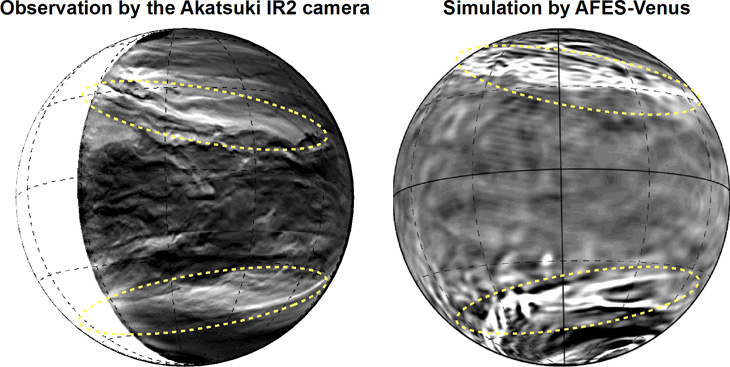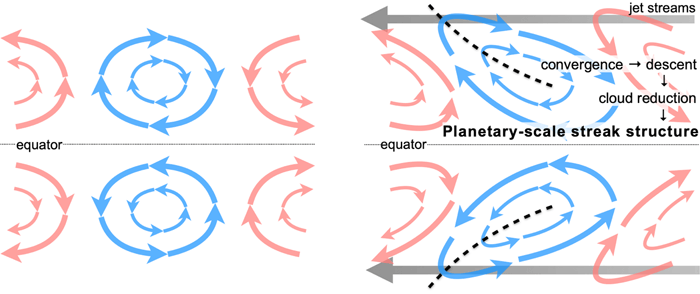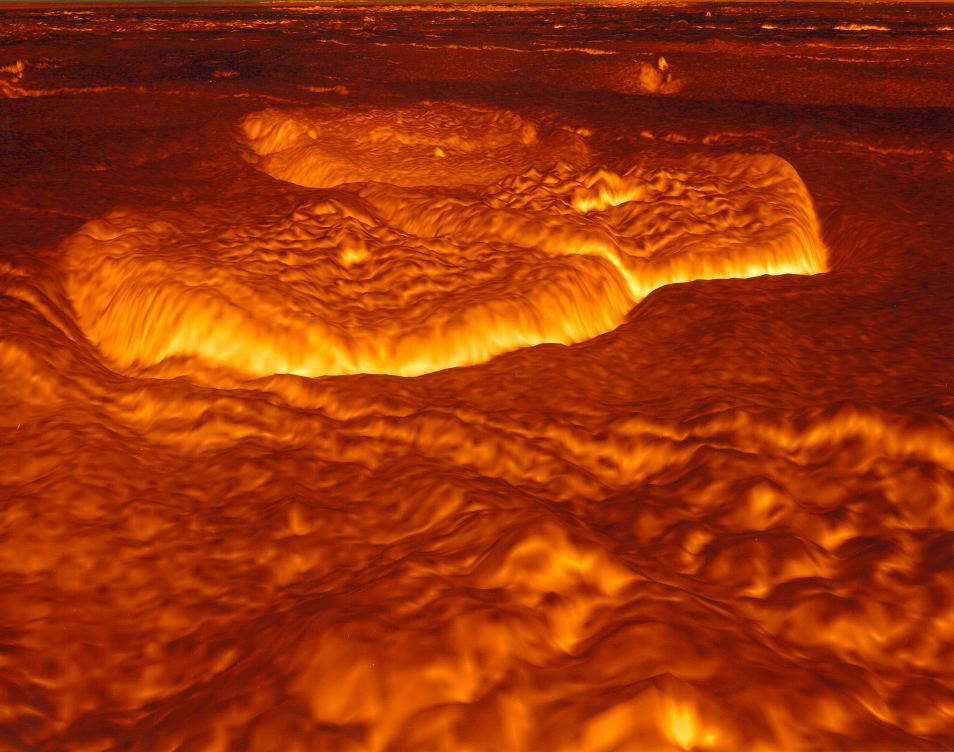Gigantic patterns in the clouds of Venus – and how they are formed
Venus is often called “Earth’s hot sister.” It is called “sister” because it is similar to our home planet in size and shape. But its atmosphere is characterized by extreme pressure and high temperatures. On the surface, temperatures can reach up to 460 °C (860 °F). The planet needs 243 Earth days to make one revolution about its axis, while Earth needs only one day, but the Earth always takes its atmosphere along with it like a good, well-behaved planet. On Venus, however, a fast, 360 km/h (224 mph) easterly wind roars at an altitude of 60 kilometers (37 miles), which completely circles the planet in only four days (called “atmospheric superrotation”).
One result of these conditions is the formation of gigantic patterns that Japanese scientists have now described and explained in a paper (as if they had been anticipating my new book “Clouds of Venus”…). These patterns were photographed by the Japanese Venus probe Akatsuki (“dawn”), which has been orbiting Venus since 2015 after a 5-year delay (due to a propulsion system error, first it had to complete a few extra orbits around the Sun).
Among other things, its infrared camera discovered giant, symmetrical streaks across Venus’s northern and southern hemispheres. They are hundreds of kilometers wide and up to 10,000 kilometers long. There are no comparable cloud patterns on Earth. With the help of a simulation called AFES-Venus (the Venus version of the AFES (Atmospheric general circulation model For the Earth Simulation)), the scientists have determined the causes of the patterns. They are formed when fast polar currents meet stable zones around the equator. In the streaks themselves, the currents then turn downward, toward the surface, and generate the streak-like patterns by thinning out the lower cloud layers.
The astronauts in “Clouds of Venus” will have to be careful to keep away from these high-wind areas, otherwise it might be bad news for their beautiful Airship.


